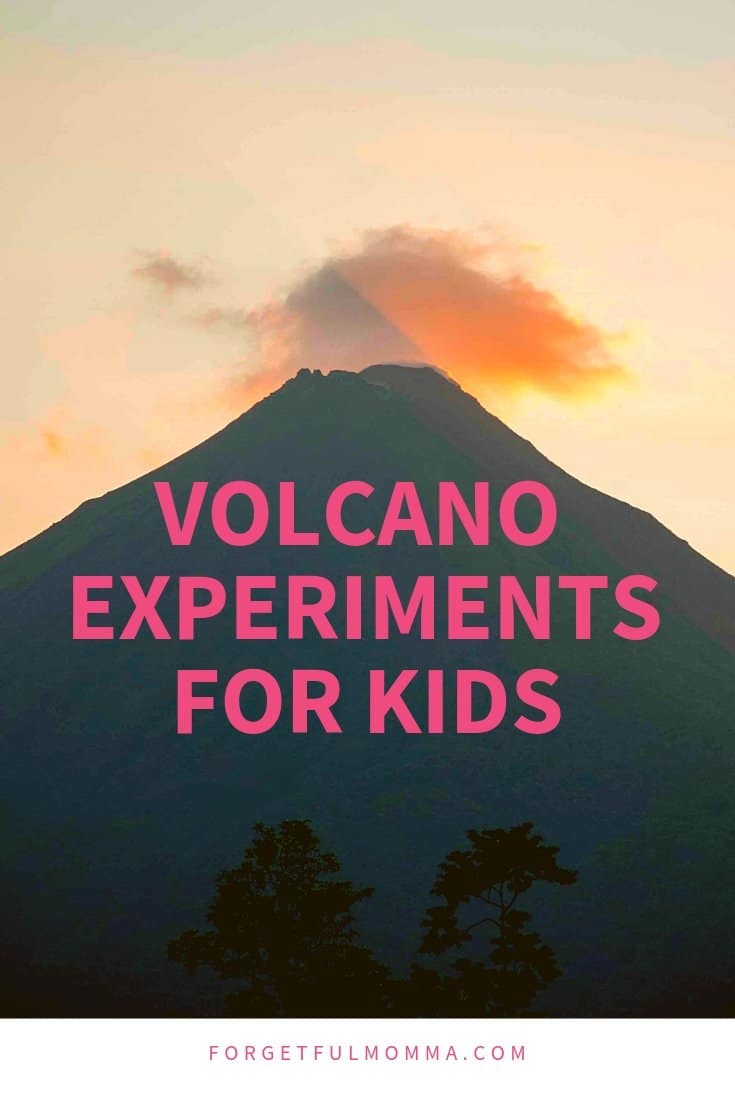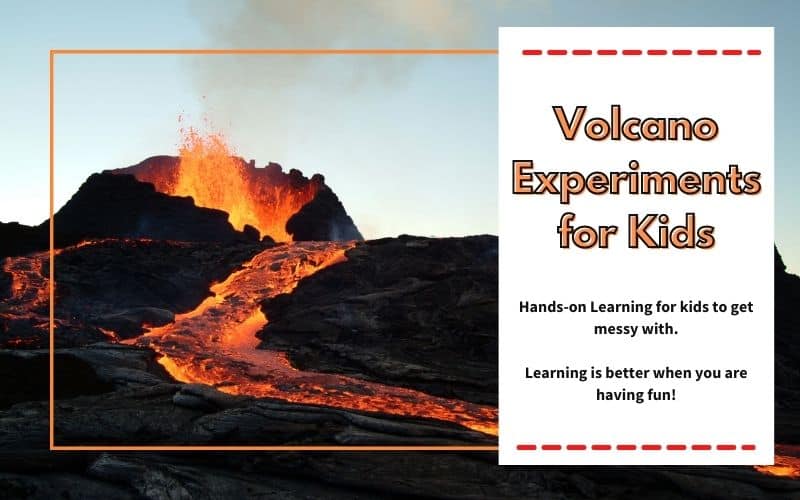What child doesn’t love a good science experiment? Weekly or bi-weekly science experiments can totally change your homeschool. If it is something you really joy, it gives you something to look forward to. Volcano experiments are a lot of fun, and the messy kind the kids often prefer.

This post contains affiliate links, see my disclosure policy for more information.
One thing on our science to-do list is to make a volcano. The construction will be them with Dadda, cause he likes stuff like that, but the explosion will be all me (and them).
Volcano Experiment Basics
The basics of making a volcano are easy:
- a shape for the volcano, which you can make or buy
- vinegar
- baking soda
- food color
Simply add some baking soda to your volcano. Add some food coloring. Pour in the vinegar and wait for the reaction.
My kids love to redo this until they run out of vinegar and baking soda.

Volcano Facts for Kids
Before you jump into the volcano science experiment, share these interesting facts about volcanoes with your little learners:
- There are about 1,900 active volcanoes on the earth. This means they have erupted recently or they might erupt. Some volcanoes are extinct. Over 80 volcanoes have been found in the ocean.
- Most volcanoes happen on fault lines, or cracks in the Earth’s surface.
- Most of the earth’s volcanoes are in the Pacific Ocean, in an area called the Ring of Fire.
- The word “volcano” comes from Vulcan, the Roman god of fire.
- Lava from volcanoes can reach temperatures of 2,000 degrees Fahrenheit.
- Volcanoes spew out ash and toxic gases, as well as lava and lava boulders.
Volcano Science Experiment for Kids
Check out how these kids use household chemicals to recreate a volcanic eruption!
Using the Volcano Kit from the video, little scientists are asked to mix chemicals to make the volcano erupt! This will be an experiment that Young Scientists will want to repeat again and again!
Magic School Bus Science Kits
You can buy Magic School Bus science experiments from Amazon. We have one, and it was a lot of fun! We did the Human Body one. These science experiments for kids include hands-on experiments with magnets, water, bacteria, fungus, lights, rainbows, and more!
